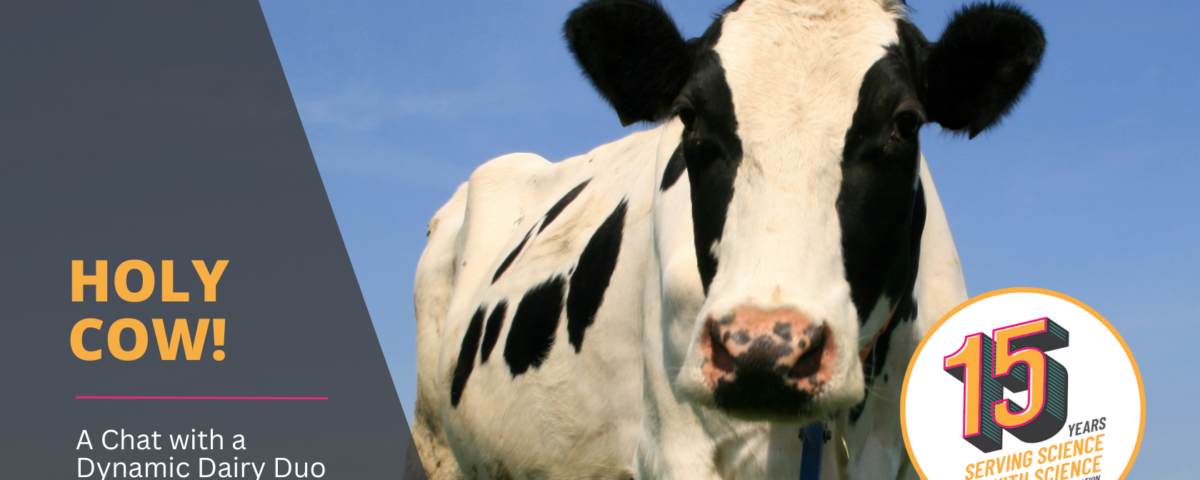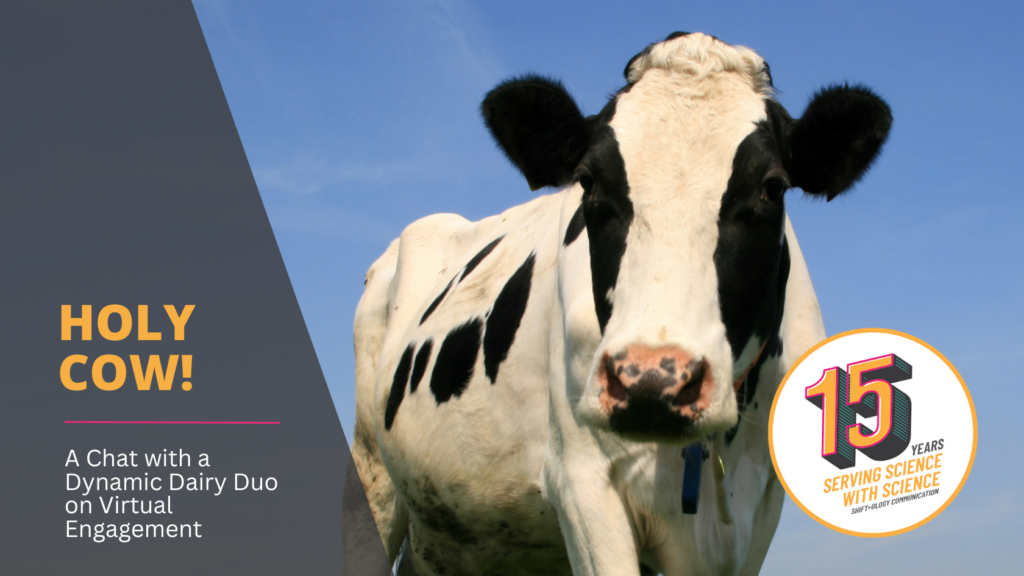Holy Cow! A Chat with a Dynamic Dairy Duo on Virtual Engagement
By Dan Toland


By Dan Toland
I recently connected with Emma Andrew-Swarthout and Kelsey O’Shea from American Dairy Association North East (ADANE) to get their take on the growth and evolution of a Virtual Farm Trip program that has reached as many as 43,000 students for a single trip in some of the nation’s largest metropolitan areas.
How’d they get started? What have they learned? How has it evolved? What are the keys to their success?
Answers to those questions and more are in highlights from our conversation below.
You’ve got to start somewhere.
Emma Andrew-Swarthout, director of dairy image for American Dairy Association North East, really had no idea what she was getting into. But she took the challenge head-on in 2018, when her manager asked if she could make live dairy farm tours work in the virtual space.
To her knowledge, no other dairy groups were doing such a thing. So she enlisted the help of her dairy-farming father and some school-teaching friends to test a virtual trip. No fancy technology. Just Emma on her phone in a Zoom meeting with two classrooms, following her dad around the farm. Raw and unedited.
It worked, but there’s a lot to manage.
EMMA: “In the moment, I thought, ‘OK, there’s some merit to this, but I need some help on the back end.’ There’s a lot that could go logistically wrong.”
That’s when she reached out to enlist the help of Shift•ology and its growing Virtual Farm Trips support program for agricultural organizations. The partnership yielded a registration of 2,500 students for the very first trip.
EMMA: “I just wanted to get through it with no major issues. I had no expectation of how many students would tune in. It blew me away. I was like, wow…now I want more.”
She got more, in a big way.
ADANE’s trips registered over 23,000 students in 2019, and when the COVID pandemic hit in 2020, they were prepared. But they took a break from VFTs that spring to allow teachers to figure out the “new normal.”
EMMA: “We were ready to take (the pandemic) head-on with Shift•ology. In the fall, we were ready to go, and the teachers were, too. They were all online, more could be involved. They were equipped and ready.”
That’s when 43,000 students registered for a single trip. But how did they get to that point?
Kelsey O’Shea, ADANE’s industry relations specialist, took over the program still dealing with the pandemic in 2021. She immediately recognized the importance of having the right support in place.
KELSEY: “So we reached over 40,00 students on one tour. The program became mine, and it was like, no pressure, but do it again. But there’s a lot involved…logistics, planning, connectivity, lining up farmers, making sure everything is working right, having a Plan B in place, just to make sure it all presents well when it’s time to go live.
There’s a lot happening, and our partnership with Shift•ology makes it all look like a produced TV show, switching cameras, showing things side-by-side, etc. There are plenty of times where we get done with a trip on the back end and think, whoah, that was rough, but on the front end, nobody knows. I’m watching Emma get mauled by the cows, getting covered in licks and manure in the background, but it looks beautiful from the other side.
Having that safety and security allows for really cool opportunities for growth and change. You need that in a program and delivery of something like this in order to think critically and dream big.”
As experience grows, so does the opportunity to innovate.
KELSEY: “I think about making a key change every year to keep kids wanting more, but still keep it familiar and comfortable enough.
We now have a dual-mic system so the moderator can now be on site with the farmer. We have multiple cameras on the farm to have a “cow cam” roaming around all the time we can show throughout the trip. We now integrate full Q&A sessions where we can pause and take time for understanding.”
Last year, ADANE also hosted a trip consisting of pre-recorded footage of a farm with poor internet connectivity. O’Shea and the farmer connected live for the event, appearing in a “SportsCenter”-esque format, superimposed at desk over the video and providing play-by-play of the trip while answering live questions.
LIVE, unscripted engagement is still the key to success.
The support O’Shea receives allows ADANE to focus on high-quality engagement as well.
KELSEY: “Our partnership works very seamlessly to produce something that gives all the benefits of feeling live without any of the detriments. It is absolutely live, candid and engaging. The audience gets to be a part of the conversation driver.
But every good ‘go with the flow’ event has someone planning it to a T. The backend is exceptionally well-planned and executed, but there’s a difference between planning and scripting. Scripting doesn’t work for us. It’s never how we’ve operated. We have farmer hosts who love to engage in phenomenal ways. I wouldn’t want to script them even if I tried.
It keeps people coming back and knowing it’s not just a pre-recording of a farm and cow being milked. There are new, interesting factors each and every time.”
Getting the message and knowing the impact.
KELSEY: “Our goals are always to be hitting our three key messages…farmers care about their animals; they care about the land; and that dairy is a nutrient-dense product. The rest of the details are just a cool vehicle for those three things. So as long as those are getting across, this is a great format for doing so.
Shift•ology’s post-tour evaluations and reporting are a really big part of knowing that. We receive excellent feedback that shows a shift in attitudes that I can report back to our farmers who run our organization. Registration is one thing, but if I have proof to show that people are walking away with different attitudes, that, to me, is a slam dunk.”
But is that impact changing? Is there still value in Virtual Farm Trips in a post-pandemic world?
KELSEY: “I still think there’s a ton of value in it. Have we seen registrations not reaching 40,000 for every tour? Absolutely. But what I’m realizing is two things:
I’m really loving the idea that creating the highest quality experience in the moment also creates additional value after the fact. We aren’t necessarily reaching the high numbers live like we were, but if I can make my way back to the front of kids’ screens on YouTube at a later time, I will absolutely take that all day long.”

“Holy Bananas!” — Kelsey O’Shea shares the impact of American Dairy Association North East’s Virtual Farm Trips on student reach and retention in this episode of the Shooting the Shift podcast.